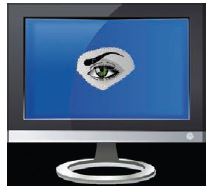Each year, some clever and innovative technologies make it and some fail. And, it is not necessarily the bad ones that fail. Often, it is the most innovative designs that worry the most people that end up falling by the wayside. For one thing, there is resistance to change, especially among the older population who are set in their ways. Another factor is the expense to keep up with the Joneses. Every new smartphone, for example, costs money and technology can become a status symbol more than a useful tool. Another factor is fear – fear that technology can be misused or turned against us.

This happened in 2014 with the introduction of Google Glass. While innovative and clever, the technology merges optical display systems with constant connectivity and AI-based inference engines to create the first widespread availability of real-time enhanced reality. There was pushback by several groups opposed to having such an unfair advantage of information, including facial recognition that could bring up personal information on anyone looked at.
Google Glass also played into the Internet of Things, where the people themselves became Internet appliances and data-gathering machines. In 2014, many designers wanted to take aim at the Internet of Things and try to figure out how it could be a really useful technology.
There are useful things that can be done, but the big cash cow innovations were simple functions like web-accessible smart thermostats. While useful for possibly saving energy and being comfortable when the user gets home, this capability is nothing new and has been done for decades using DTMF tones and phone lines.
Still, the Internet of Things and the increased use of wireless technology has made 2014 a noteworthy year, especially for designers. Thanks to economy of scale, high-power wireless technologies like Wi-Fi and Bluetooth became easier to design
in than ever before. Low-cost OEM modules as well as app notes and development kits from micro makers made wireless a cut-and-paste operation for many embedded systems designs, especially with mixed-signal and wireless sensors.
This plays into the wearable market and more attention has been devoted to developing the next generation of wearable computers that will serve as our personal area network (PAN) aggregator for our constant connectivity. Wearable technology is just at the beginning of its lifecycle; we have seen progress in pico projectors, gesture recognition systems, and medical sensors, as well as Google Glass.
In addition, medical devices have begun to leverage the PAN and the Internet of Things. In 2014, medical device makers for blood sugar and heart monitoring (for example) began learning how to connect their medical technology to the cloud. This is just beginning to expand.
Perhaps one of the most noteworthy results of 2014 is the established loss of any notion of privacy. As more revelations surrounding the Snowden leak make more people aware that they are under a constant state of surveillance, so too have device and software manufacturers capitalized on the task of gathering as much data as possible on each and every one of us. Data mining has risen to new all time highs and computers, apps, phones, and even TV sets are all gathering data on us, and we happily agree when we click on the “agree” button.
In 2014, the cost of even high-end video is so low, devices like smartphones can have multiple cameras and do. Microphones and cameras on our laptops, tablets, and smartphones that can be turned on remotely at will and
eavesdrop. This is nothing new either. For generations, old-style landline telephones could monitor voice conversations, even while on hook. But this is a new level of intrusive surveillence. In 2014, even new TVs feature video cameras and microphones. While claiming to be used to do voice recognition and gesture control, a typical new web-enabled
TV has a privacy policy that states it part, “Do not say or do anything of a personal nature near the TV, even if it is not on.”
The TV can and will record everything you do and watch and say. The year 2014 brought us the TV that is watching you.
By Jon Gabay
Advertisement
Learn more about Mouser Electronics





